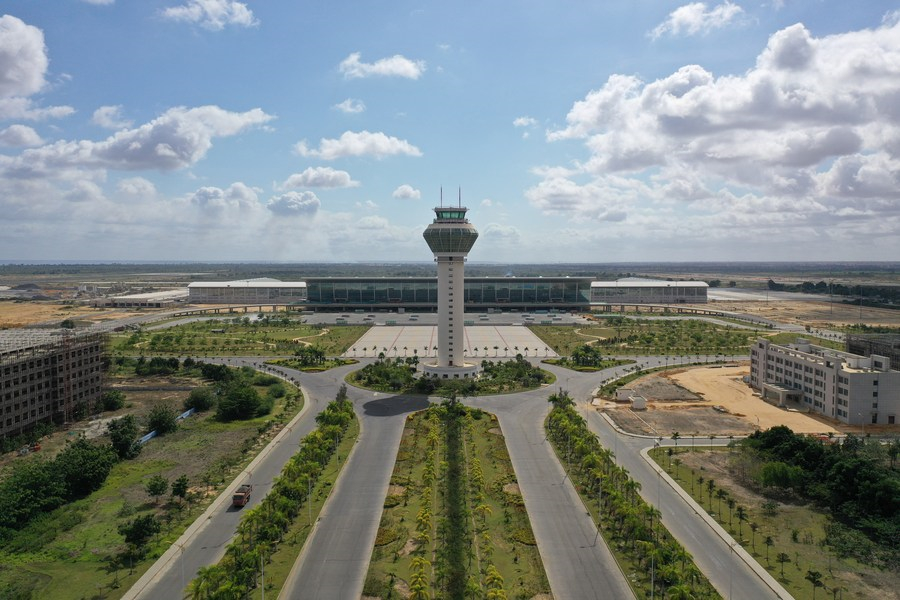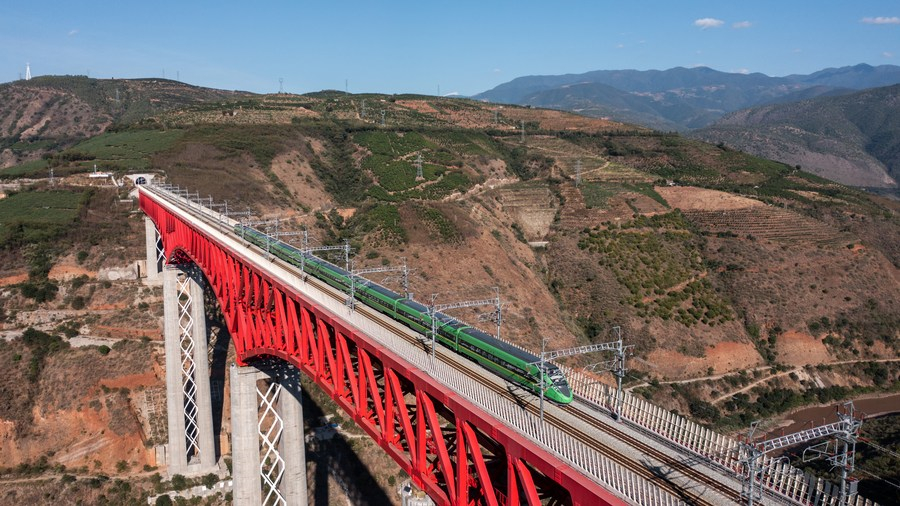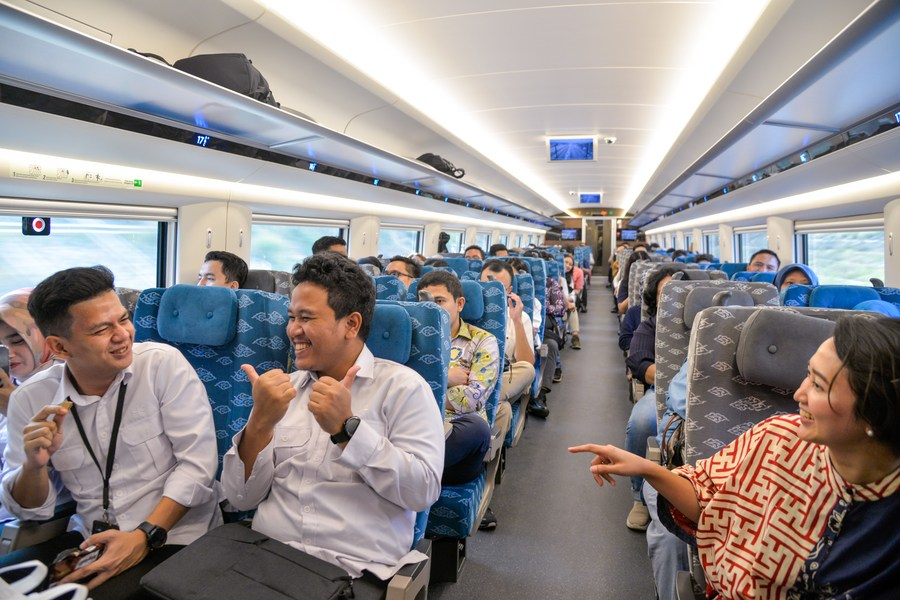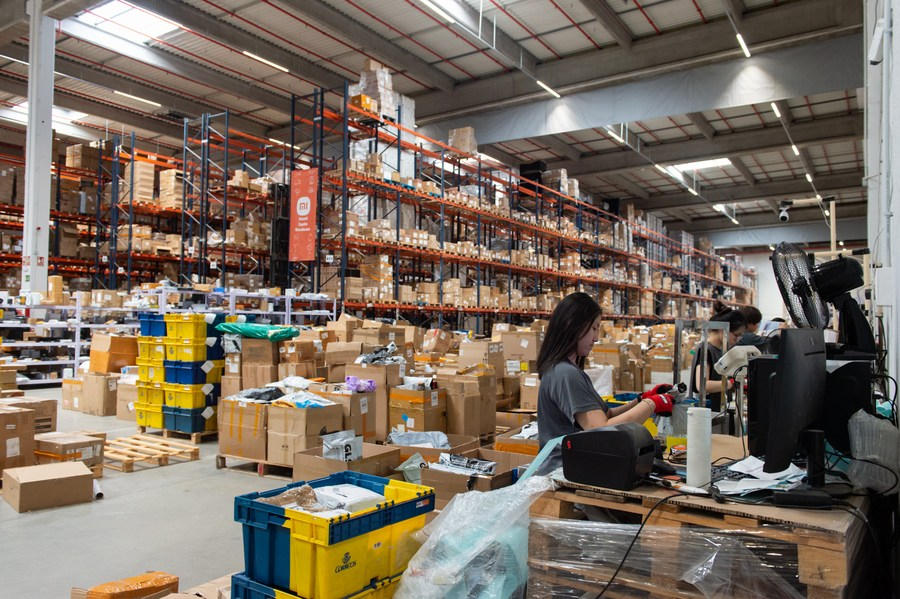China's extended Belt and Road commitment to reshape int'l transport routes, deliver prosperity
* As China has pledged to build a multidimensional Belt and Road connectivity network, railways, ports and corridors will continue to be a prominent part of future cooperation.
* China will participate in the construction of the trans-Caspian international transportation corridor, and collaborate on a new logistics corridor across the Eurasian continent linked by direct railway and road transportation.
* China will vigorously integrate ports, shipping and trading services under the "Silk Road Maritime," and accelerate the building of the New International Land-Sea Trade Corridor and the Air Silk Road.
BEIJING -- As China has pledged to build a multidimensional Belt and Road connectivity network, railways, ports and corridors will continue to be a prominent part of future cooperation.
According to an official announcement made on Wednesday at the third Belt and Road Forum for International Cooperation, China will participate in the construction of the trans-Caspian international transportation corridor, and collaborate on a new logistics corridor across the Eurasian continent linked by direct railway and road transportation.
It will also vigorously integrate ports, shipping and trading services under the "Silk Road Maritime," and accelerate the building of the New International Land-Sea Trade Corridor and the Air Silk Road.
"I think the Belt and Road Initiative (BRI) is the most emblematic initiative for infrastructure and cooperation in the world today. It's very important to have a blueprint for the future," Velia Govaere, correspondent with La Nacion from Costa Rica told Xinhua on the sidelines of the forum.
In addition to building the Belt and Road connectivity network, China has also extended its commitment in seven other prospects including supporting an open world economy, boosting green development, carrying out practical cooperation, advancing scientific and technological innovation, supporting people-to-people exchanges, promoting integrity-based Belt and Road cooperation, and strengthening institutional building.

This aerial photo taken in June 2022 shows an airport in Angola constructed by the China National Aero-technology International Engineering Corporation (CAIEC), an international engineering segment under AVIC INTL. [AVIC INTL/Handout via Xinhua]
INFRASTRUCTURE CONNECTIVITY CHANGES THE WORLD
This year marks the 10th anniversary of the BRI. Over the past decade, brand new airports and harbors, railways, roads, and industrial parks have been built under the initiative, creating new economic corridors and new growth drivers.
Citing flagship projects such as the China-Laos Railway, the Jakarta-Bandung High-Speed Railway, and the Mombasa-Nairobi Standard Gauge Railway as examples, Vice Commerce Minister Guo Tingting said these cooperation projects have helped BRI countries improve infrastructure construction, promote connectivity, enhance people's well-being, and strengthen development capacity.
As a Chinese saying goes, "building the road is the first step towards prosperity." For some landlocked countries, BRI projects have proven to precisely accommodate their development demands and help them embrace new opportunities.
With only a 3.5 km-long railroad to Thailand, the economic development of Laos, the only landlocked country in Southeast Asia, had long been restricted. The 1,035-km China-Laos Railway was a game changer.
Since its launch in December 2021, the rail line has recorded over 20.9 million passenger trips and transported 25.36 million tonnes of cargo as of the beginning of September this year.
From land-locked to land-linked, today, Laos has become a hub in the Indo-China Peninsula. Up to 25 provincial areas in China have launched cross-border freight train services that connect to the new railway, transferring commodities to countries including Laos, Thailand, Myanmar, Malaysia, Cambodia and Singapore.

This aerial photo taken on Nov. 23, 2022 shows a Fuxing bullet train running on the Yuanjiang bridge of the China-Laos Railway in southwest China's Yunnan Province. [Xinhua/Hu Chao]
Not only is the land connectivity of landlocked countries with other regions steadily improving, but BRI cooperation has also helped them reach seaports.
The China-Kazakhstan (Lianyungang) logistics cooperation base, the first BRI entity project launched in 2014, acts as the only departure port for Kazakhstan's grain transit in China and an important dry port for landlocked Central Asian countries.
Over the past 10 years, more and more clients from Central Asian countries have sought opportunities in Lianyungang, said Xiao Faliang, multimodal transport division general manager of Sinotrans Landbridge Transportation, a company engaged in international freight transport.
"It used to take over 20 days for goods to travel from Lianyungang to Alma Ata, the largest city in Kazakhstan, but now the quickest time is only a week," said Xiao, attributing the shorter time to the improved operating efficiency of China-Europe freight trains, another BRI outcome.
POSITIVE SPILLOVER EFFECT
In addition to promoting regional connectivity for landlocked countries, signature BRI projects have also generated positive spillover effects.
The landmark BRI project, the Jakarta-Bandung High-speed Railway shortens train trips between Jakarta, the capital of Indonesia, and Bandung, a famous tourist city. This new 142.3-km line has reduced travel times from over three hours to about 40 minutes and has stimulated employment along the railway.
According to statistics provided by Kereta Cepat Indonesia China, 45,000 Indonesian employees were trained on-site through institutions and by their Chinese teachers during the high-speed railway's construction. And the project has created about 51,000 jobs in Indonesia.

Passengers chat on a carriage of a high-speed electrical multiple unit (EMU) train running on the Jakarta-Bandung High-Speed Railway in Indonesia, Oct. 17, 2023. [Xinhua/Xu Qin]
The Laos section of the China-Laos Railway shares a similar story. It has added over 100,000 jobs to sectors such as logistics, transportation, commerce and trade, as well as tourism.
BRI projects are also helping to stabilize international supply chains.
China-Europe freight trains have reshaped the international transport routes in Asia and Europe. By the end of September, some 78,000 train trips had been made, providing services for 217 cities in 25 European countries.
Goods carried by China-Europe freight trains have been expanded from mainly digital products to over 50,000 varieties of products in 53 categories, as the service features security, stability and resilience.
GREEN AND DIGITAL PUSH
To further promote global connectivity, China will take multiple measures to establish high-quality landmark BRI projects under the principles of extensive consultation, joint contribution and shared benefits, cultivating new growth drivers and delivering real gains to participating countries.
The country will further improve the operation efficiency of China-Europe freight trains and accelerate the construction of the New International Land-Sea Trade Corridor, as well as establish more work mechanisms with BRI countries to promote trade and investment cooperation as part of efforts to smooth the BRI industrial and supply chains, according to Guo.
In addition, deepening cooperation in areas such as green infrastructure, green energy and green transportation is the priority of China's new measure on promoting green development under the BRI.
Guo also noted that in the next step, China will take Silk Road e-commerce cooperation as a pivot to improve the economic and trade cooperation in the digital field with BRI countries.

Staff members work at a warehouse of Qxbox Technology Warehousing Ltd. in Alcala, Spain, July 28, 2023. [Photo by Gustavo Valiente/Xinhua]
By the end of 2022, China had signed MoUs on the construction of the Digital Silk Road with 17 countries, and on e-commerce cooperation with 30 countries, according to a white paper released earlier this month.
Cross-border e-commerce is a crucial engine for the development of the Digital Silk Road, said Roy Shao, partner of technology, media, and telecommunications consulting services at EY Greater China, adding that Silk Road e-commerce may embrace huge opportunities in the future because of the great consumer potential in many BRI countries.
China will make full use of platforms like the Global Digital Trade Expo, accelerate the construction of pilot zones for Silk Road e-commerce cooperation, and promote the development of new areas such as digital payment and smart logistics, as part of efforts to share opportunities of digital development with other BRI countries, Guo said.
Video reporters: Sun Lei, Zhou Shengbin, Wang Anhaowei, Ding Yiquan, Zhaoxu, Zhou Xuanni, Yang Yanbin, Wu Siyang; Video editors: Zhuang Yueyuan, Wei Yin, Zhengxin, Wang Han
























